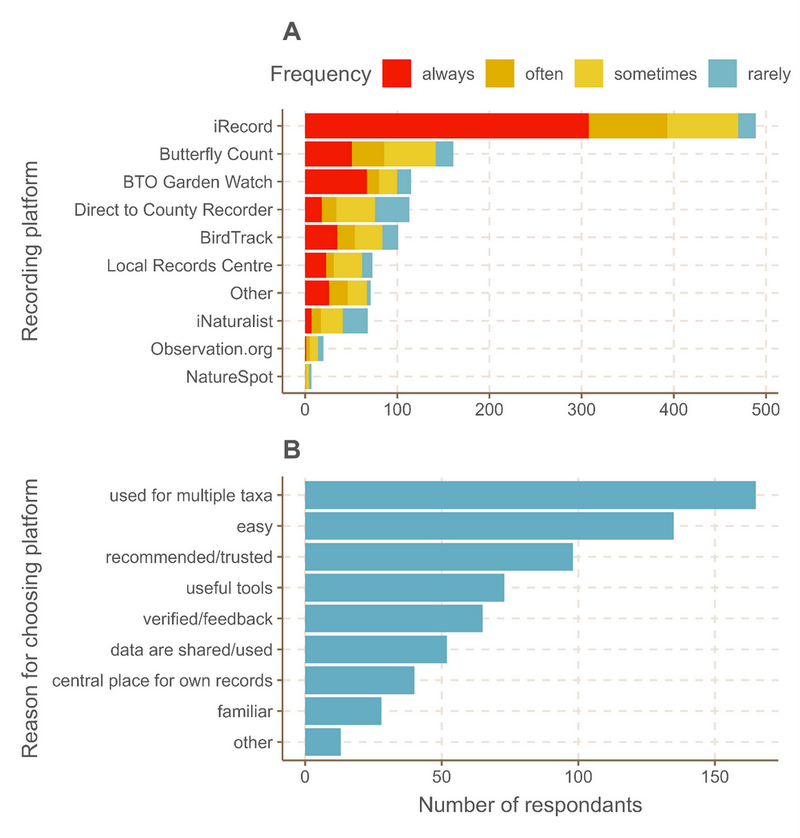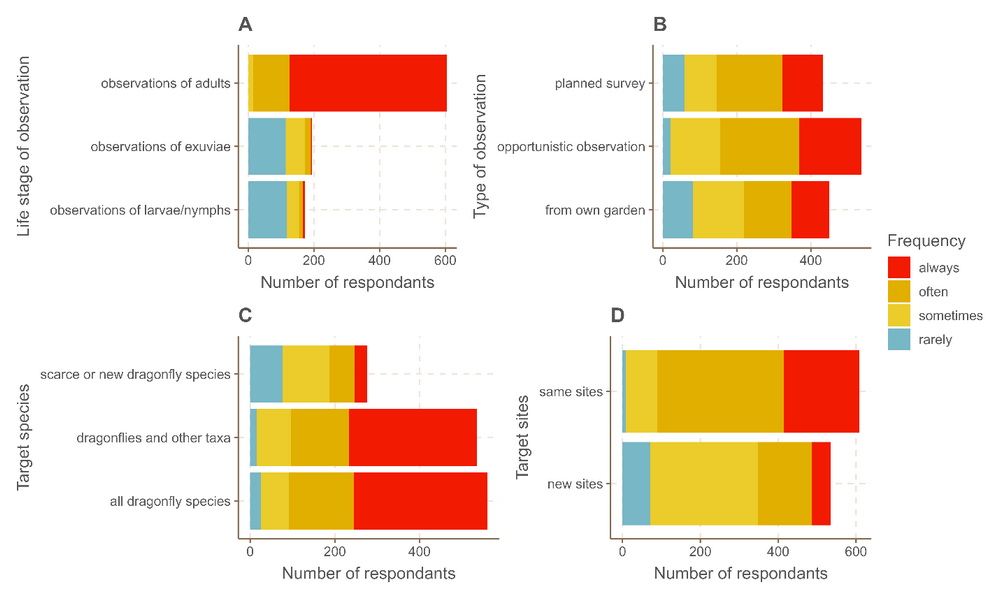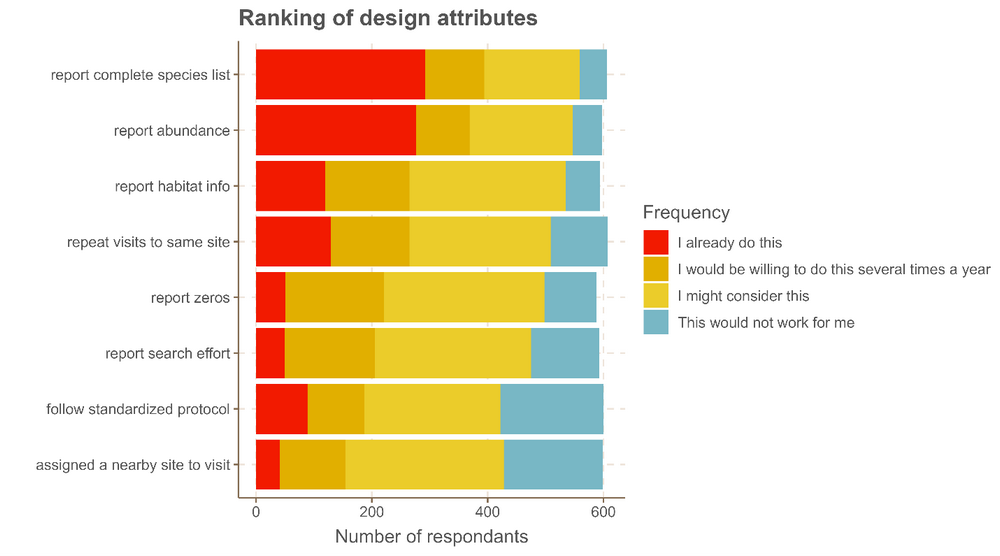By Diana Bowler, UKCEH
With growing evidence of declines in insect numbers, it is more important than ever to develop and improve data flows on species observations. As part of a project funded by the Joint Nature Conservation Committee, we wanted to understand the decision-making of recorders when collecting and reporting species’ observations, focusing on a popular group: dragonflies. Dragonfly occurrence records already underpin regional and national atlases and are used in scientific studies. But dragonfly recording is also diverse, which can sometimes create challenges when using the data.
We released a survey during September of last year in which we asked recorders about how they collect data and also their opinions about how dragonfly recording might evolve in the future. We had an overwhelming response from over 700 recorders with an extraordinary level of collective experience and expertise. If you are among those, thank you so much! We summarise below some of the answers to our main questions.
We first asked about platform choices for recording (Fig. 1). iRecord was the most popular platform, but platform choice was determined by multiple factors. Many people mentioned preferring general apps so they can use the same app for different organisms. Others mentioned the importance of simplicity and useful tools (e.g. being able to easily see, upload or download personal observations). Verification of observations was also mentioned by many as important to motivate efforts and choice of platform.

We also asked about general experience and habits of recording (Fig. 2). Most people were confident of identifying species within their local areas, primarily by observing adults. Most people record dragonflies at the same time as other taxa. Observations come from a balanced mix of planned surveys and opportunistic encounters.

Finally, we asked for opinions about the design features of structured monitoring (Fig. 3). Most people already report complete lists of species (i.e. report all the species they see) along with the abundance of each species. Many people also already repeatedly visit the same site to record dragonflies. These practices align with the protocols of structured monitoring schemes employed for birds and butterflies. People were generally willing to report survey effort (e.g. duration or area surveyed), which isn’t routinely collected by current platforms, but it could be useful in data analysis to account for variability. People were also generally willing to report ‘zeros’ when no dragonfly species was seen, which would help separate ‘no species’ from ‘no surveys’. People were more divided on whether a single standardized protocol would work for them and their area.

These insights will be massively useful as we think about how to use these data for questions about dragonfly trends as well as monitoring threats and tracking the success of conservation action. We are in the process of writing a full version of the results. If you would like to receive a copy, please do not hesitate to email Diana Bowler.
This work was funded by the JNCC through the Terrestrial Surveillance Development and Analysis project.